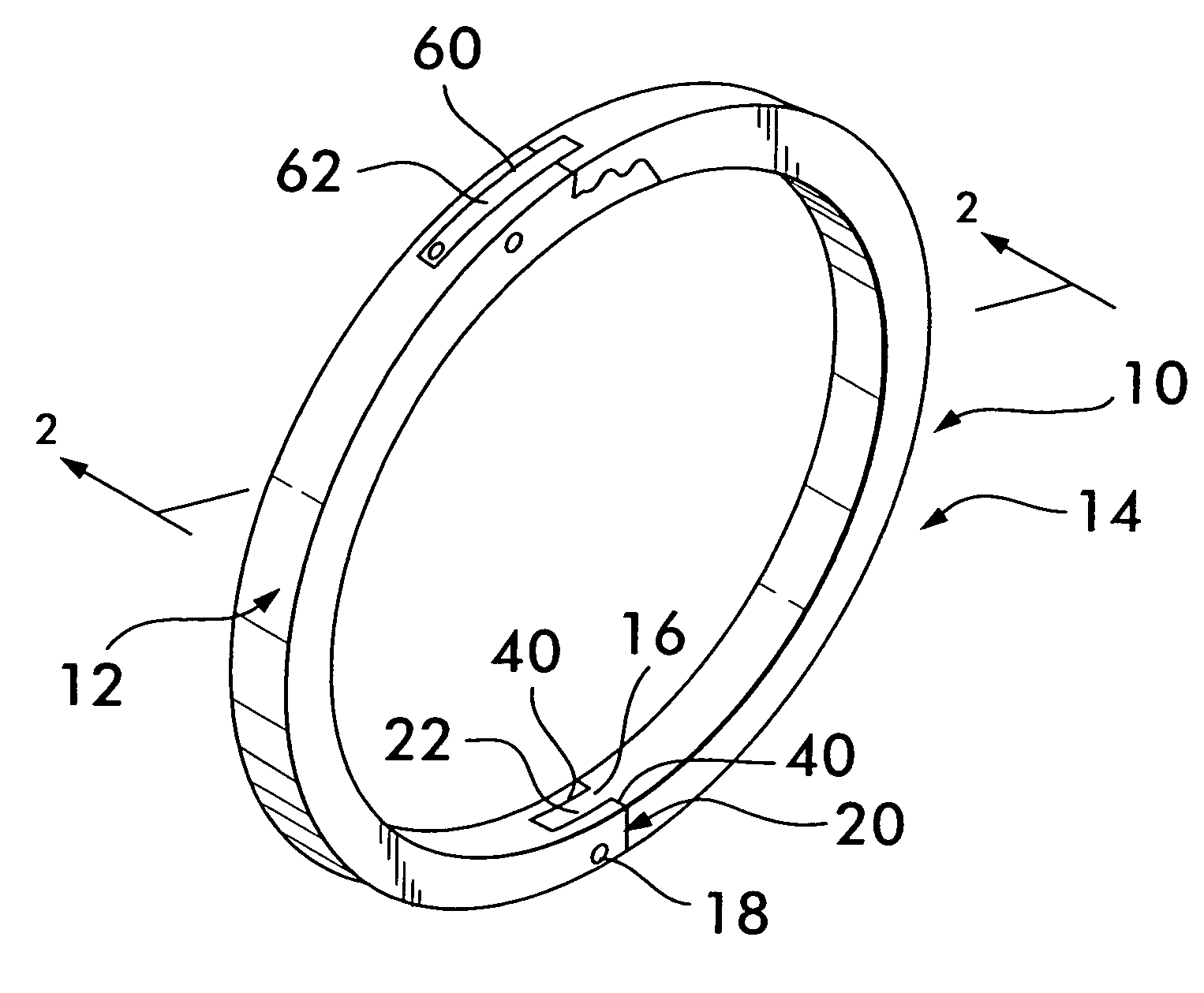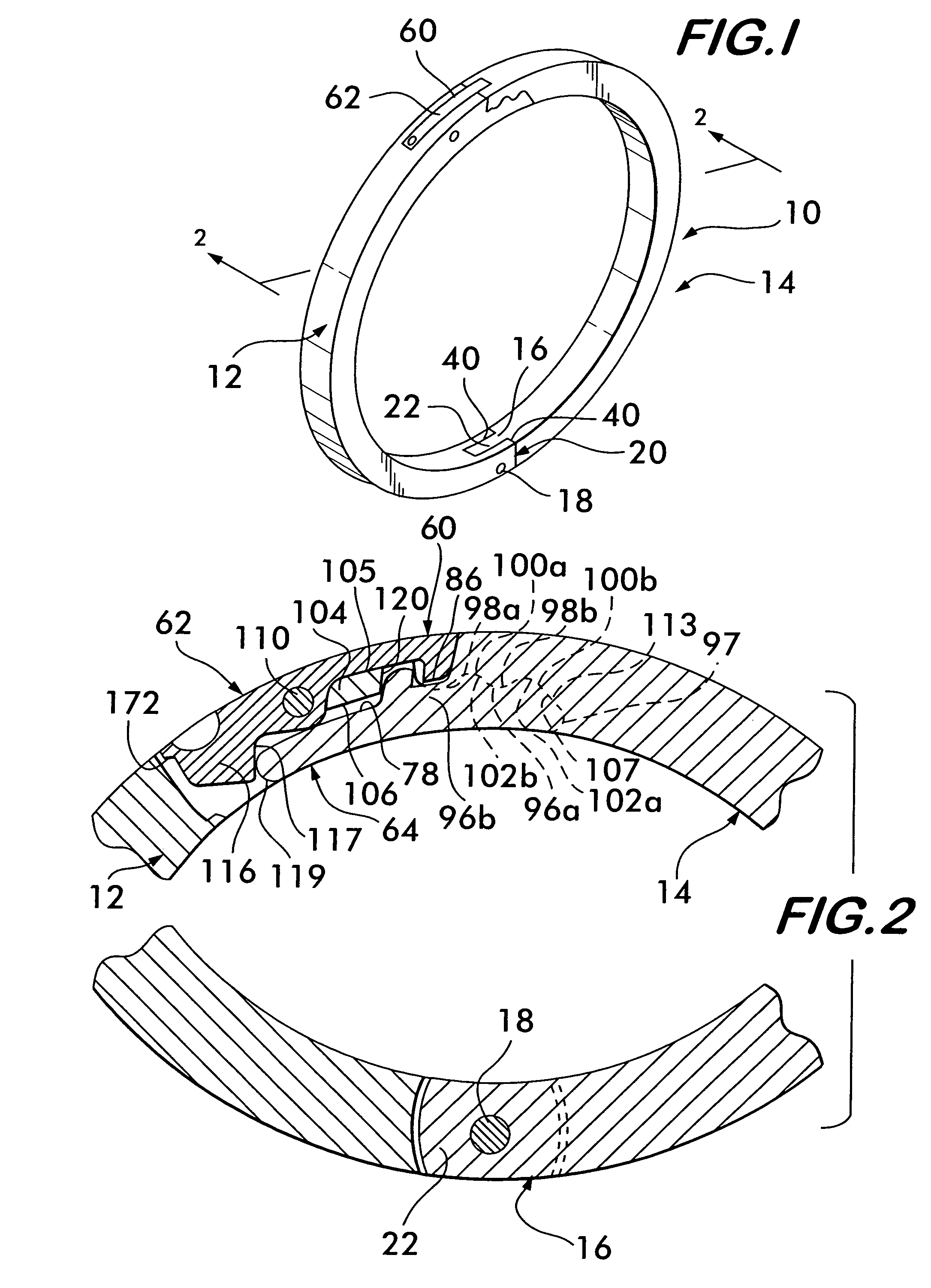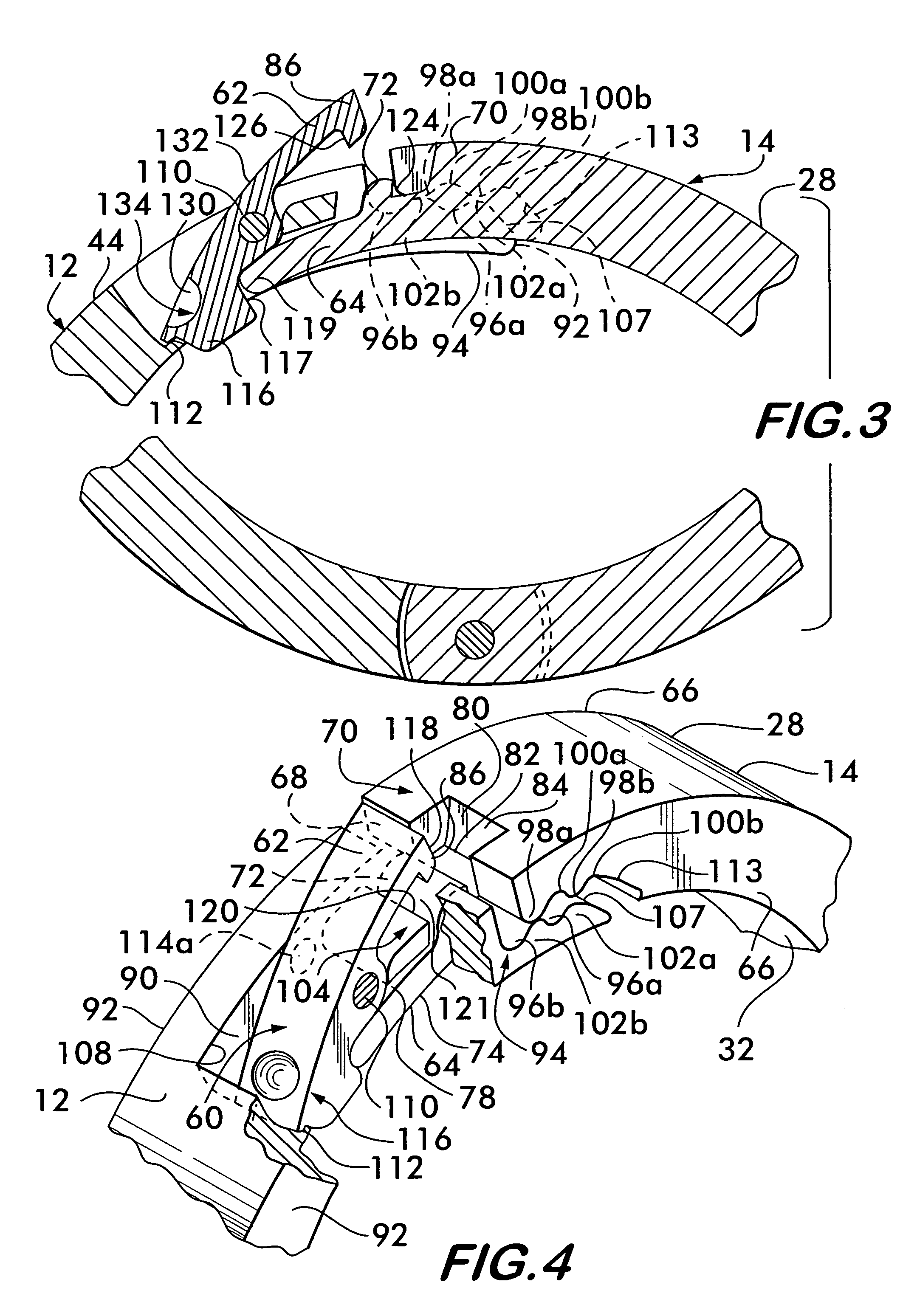Openable ring with cooperating locking means
a technology of locking means and openable rings, applied in the field of rings, can solve the problems of increasing the fabrication and material costs of rings, unable to achieve the desired durability and safety against self-opening, and reducing the locking capacity of construction, so as to achieve the effect of reducing the manufacturing cost of rings
- Summary
- Abstract
- Description
- Claims
- Application Information
AI Technical Summary
Benefits of technology
Problems solved by technology
Method used
Image
Examples
Embodiment Construction
[0021]Referring now to the various figures wherein like reference characters refer to like parts, an openable ring with a latch mechanism is generally shown at 10 in FIG. 1. The device 10 basically comprises a pair of arcuate sections 12 and 14 pivotally interconnected through a hinge connection 16 adjacent one of their contiguous ends, and including a latch mechanism 60 adjacent their opposite contiguous ends.
[0022]Referring to FIGS. 1 and 2, the hinge connection 16 includes a hinge pin 18 extending through aligned openings in yolk 20 of section 12 and tang 22 of section 14. At this point it should be noted that the ring sections 12 and 14 are preferably made of a precious metal, e.g., gold, silver or platinum, and are formed from wax impressions of the ring sections in a conventional investment casting operation. Yoke 20 also includes leg sections 40. The details of the construction and operation of the hinge connection are set forth in detail in U.S. Pat. No. 5,136,858, which is ...
PUM
 Login to View More
Login to View More Abstract
Description
Claims
Application Information
 Login to View More
Login to View More - R&D
- Intellectual Property
- Life Sciences
- Materials
- Tech Scout
- Unparalleled Data Quality
- Higher Quality Content
- 60% Fewer Hallucinations
Browse by: Latest US Patents, China's latest patents, Technical Efficacy Thesaurus, Application Domain, Technology Topic, Popular Technical Reports.
© 2025 PatSnap. All rights reserved.Legal|Privacy policy|Modern Slavery Act Transparency Statement|Sitemap|About US| Contact US: help@patsnap.com



